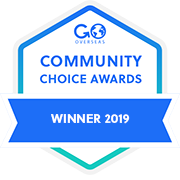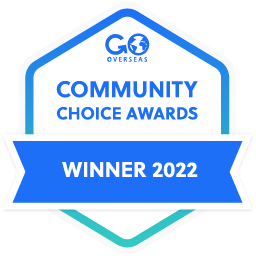Location
- Fiji
Length
4 to 12 weeks
Financial Support
Payment plans
Health & Safety
Jan 11, 2023
Aug 22, 2014
17 travelers are looking at this program
About Program
Dive into crystal blue water and discover the rich biodiversity of the South Pacific. Your research assistance will aid the local management and national efforts to conserve Fiji’s delicate coral reefs and marine ecosystems. Travel to idyllic traditional Fijian villages; gain your PADI Advanced Open Water qualification and contribute towards tangible, long-term community benefits.
Video and Photos
Impact
Sustainability
We are committed to exert a positive impact on the regions, countries and communities which we visit. For us it is paramount that the local organisations and communities benefit from our cooperation by working with trusted local businesses and project partners who align with our sustainability objectives.
Ethical Impact
We are passionate about travel and the positive impact it has on young people’s outlook and future prospects. Our mission is to help people become global citizens through authentic, socially and environmentally responsible travel experiences which aid self-discovery and personal development.
As a small team, we are committed to providing a highly personalised service from your initial contact right through to your chosen adventure. We achieve this through our dedicated team of program leaders and support staff, all of whom are passionate travellers united by a common purpose to help young people explore the world.
As a small team, we are committed to providing a highly personalised service from your initial contact right through to your chosen adventure. We achieve this through our dedicated team of program leaders and support staff, all of whom are passionate travellers united by a common purpose to help young people explore the world.
Program Highlights
- Adventure into the Pacific Ocean as you conduct underwater surveys
- Become an experienced PADI qualified diver
- Experience cultural immersion into the Fijian way of life
- Contribute to sustainable marine conservation research and community awareness efforts
- Explore a breathtaking paradise among volcanic mountains, white beaches and remote islands

















Response from Gapforce
Thank you for your review. We are glad that you had fun on the trip and enjoyed the company of the other volunteers and felt the support from the staff was of a good quality.
To address your issues, both Medforce volunteers and Greenforce volunteers are treated equally. They generally do the same activities around camp and in their free time and then split off during daily activities. Medforce volunteers having their medical lectures and visiting the nursing stations and Greenforce, having marine biology lectures and diving. We are very sorry if you felt you were treated unfairly and we will look into this to make sure it does not happen in the future. As for the re-structure, this is a volunteering trip, the camp was already built however we ask volunteers to help out around camp whether that means cooking on occasions or helping to look after the camp for the next phase. The food is basic and is advertised this way, we use local produce to create variety and we ensure it sustains the volunteers for all their daily activities.
We can also assure all our equipment is subject to routine safety checks. Our leaders are all PADI qualified to an instructors level and check over the equipment regularly. If they deemed any of the equipment to be unsafe to use we would replace it immediately.
Most of our volunteer's top experiences on their feedback forms are getting to know the local community. On Sundays, the day off the volunteers spend the day with their host family and go to a ceremony in a church funded by Gapforce. We have a very respected place in the community and have an extremely long and strong relationship with the locals. The leaders all work for us for at least a 12 month period so during that period they develop a lasting and trusting relationship with the community.
Our trips offer dive training from experienced PADI certified professionals, daily lectures from experienced scientists, the chance to live in a camp right on the sea front in a small Fiji island, to be completely excepted into the local community and the chance to make friends for life with the other volunteers.
We will take all of your comments into account and keep on working towards improving Greenforce Fiji in the future.